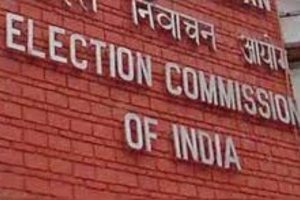As is well known, Durga Puja has always been the most cherished festival for Bengalis. With the advent of corporate culture, the popularity of theme-based Durga Puja celebrations has surged. Local clubs now engage in healthy competition, each striving to outdo the other. The primary aim of these pandals is to attract ever-larger crowds. The more spectators who marvel at the artistic architecture, the more likely they are to spread the word, drawing even more visitors. This cycle ultimately leads to greater recognition, awards for the clubs and increased visibility for sponsors. In the midst of all this, the actual religious aspect of the puja often seems to take a backseat. This year is no different.
Amidst the middle of corporate and theme-based Durga Puja, there lies a specific Durga Puja, which can also be termed as ‘bonedi bari Durga Puja’. The thakur dalan of the bonedi baris in Kolkata has its heritage in itself. No one knows how many legends and masterpieces these houses have been part of. Some are more than two hundred and three hundred years old, while many in Bengal have been more than five hundred to a thousand years old.
Advertisement
This story about Shyamal Dhan Dutta Durga Puja started in the year 1880. The puja is done with every tradition their ancestors provided them with. Devotion and respect are what separate this particular puja apart from others. Many house residents live in different parts of Kolkata, while some live abroad. During the five days of festivity, they gather together and celebrate with their utmost joy. One can easily go back to the pastimes of the heritage these houses hold.
Being a part of the Hatkhola Dutta family, Ghosh House is special for continuously hosting the puja and making it a grand success. Dewan Jagattam Dutta had three sons. Ramjoy, Kashinath, and Harsundar. Kalicharan was the eldest of the six sons Ramjay had. Shyamaldhan Dutta was the youngest of Kalicharan’s five sons. He also bought the house and started his new residence in 1880. Shaymal Dhan had two daughters. Rajakshmi Devi was the younger among the two. She was married into the Girish Ghosh family of Maniktala. So this house is now under the supervision and maintenance of the Ghosh family.
In this house, the statue of Maa Durga is ‘Mathachuri’ or three chalis. The companion of their beloved goddess is a horse-shaped lion. The family still prepares the favourite foods of Maa Durga, which are luchi, radhaballavi, ledikeni, khasta kochuri, dorbesh, goja and narkel naru.
While speaking of the heritage and procedures, Ambarnath Ghosh, the fourth generation of the Ghosh family, said, “We are continuously following the same tradition. The potter makes the idol, and the person who paints the idol has been painting the idol. But as time passed and their bones grew old, the tradition and continuity were affected. The person who used to paint the idol came all the way from Nabadwip. He could not come because of age-related issues. This made us move forward with someone else.”
He also stated, “The recipes for the goddess are prepared in a separate room. This particular room is open only during the five days of the Durga Puja and closed for the rest of the year.”
While the house has been standing in the city of joy for over more than 200 years, there have been no problems related to maintenance and management. The preparation for the puja is mainly done with the revenue generated from the properties they have in their hands. The prasad is being distributed among the seven families, and they carry it in their residence.
What makes this puja special is that they still follow every ritual wholeheartedly and with proper respect and dignity. It has been able to make a huge impact on the heritage of bonedi bari Durga Puja. It is considered to be one of the best Sabeki pujas in the entire community of north Kolkata pujas has over its past.
The house celebrates Kumari Puja for three days. Moreover, there is a tradition going on of Sodhoba Puja. These rituals are mainly followed to bring good luck to the family. Every married woman in the family wishes to have the best puja, and so be it with the blessings of Maa Durga.
While stating about the challenges, he mentioned that there have been no such so-called challenges over the house to conduct the grand festivity. Maa Durga resides in this house, and it is with her blessings that we have been able to do Matri Bandana for the past century. In his 80s, the father-like figure stated that we must preserve the house, and we will make sure that the torch is being passed to future generations.











